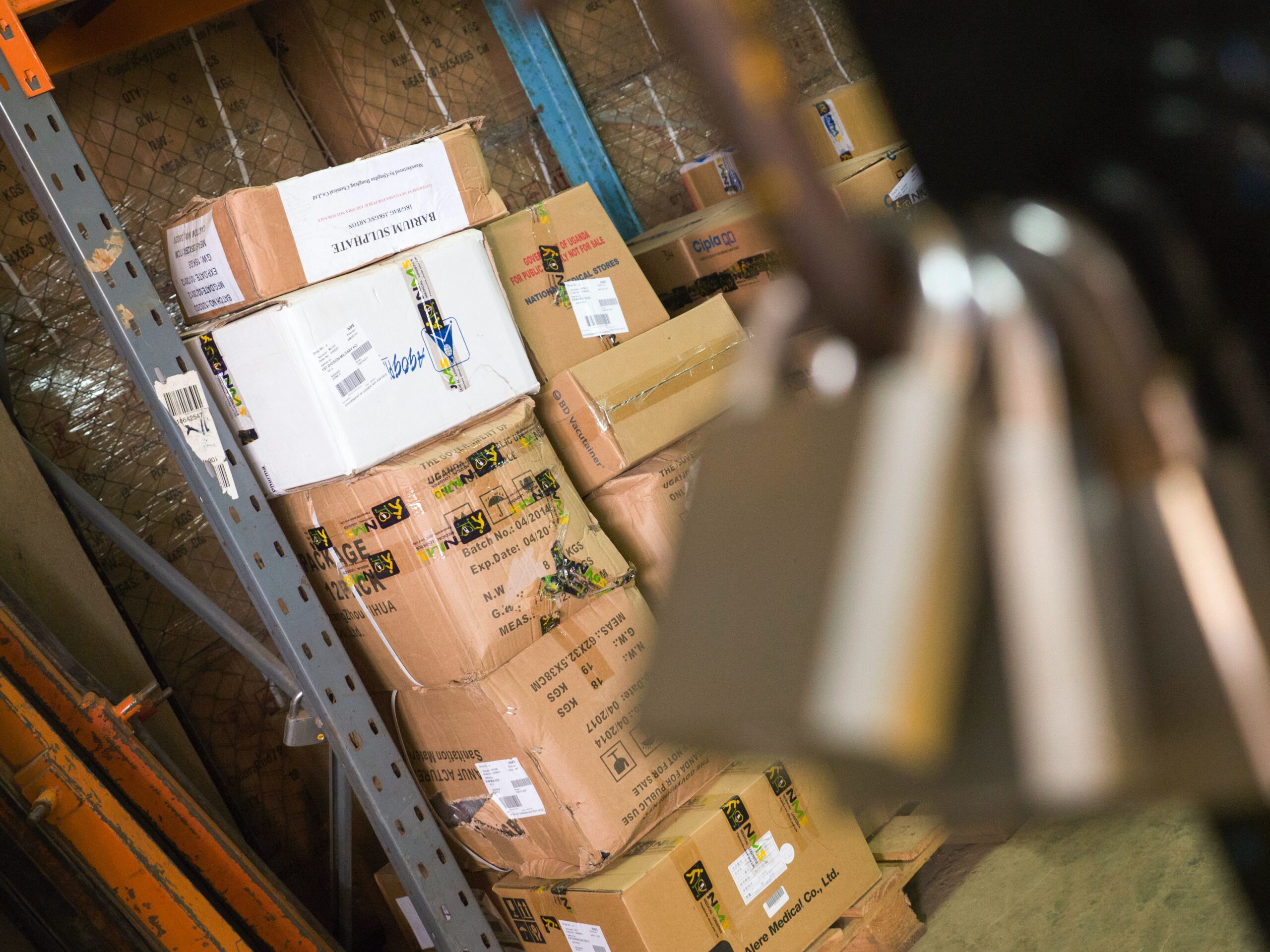How Do You Handle Slow-Moving Inventory? The Ultimate Guide For eCommerce


Subscribe now! Receive 15% discount.
Don’t miss out – get 15% off your first order when you join the newsletter. It’s fast, free, and kinda smart.
You're now subscribed!
In this article:
Slow-moving inventory is a problem that most businesses will experience from time to time.
However, it is challenging to identify the exact reason why this happens.
This is because the reason behind sales being slower than anticipated for a particular product may vary greatly.
What’s more, the solution to each problem must match the cause itself. The retail business is fast-paced, and you need to keep pace with it.
In other words, your inventory needs to move as quickly as the retail business moves (if not quicker).
Knowing how to spot slow-moving inventory, discovering the underlying cause and effectively tackling the issue are key to business success. This is especially the case for businesses that sell physical products.
No one wants stale, dead, obsolete stock lying around in the warehouse, eating up storage space and capital.
The stock needs to move as forecast so that you can bring in new products, free up your capital and make top dollar from each item in stock.
In this article, you will learn what slow-moving inventory is, what negative effects it may have on your business, and ways to identify slow-moving inventory and deal with it.
Let’s get started!
What Does Slow-Moving Inventory Mean?
Slow-moving inventory is the stock that takes longer to sell. These are excess inventory items that are sitting in the warehouse or storage without moving for a certain amount of time.
The amount of time that it takes to determine whether the stock has become a slow-moving inventory is determined by the stock owner.
This can be set at 90, 100, 120, or 180 days depending on the business in question, its operations and its current growth strategy.
For instance, a company that sells baked goods online and offline cannot assign 90 days to its slow-moving inventory definition.

By then, the inventory will be moldy and gross. However, if a company sells digital business card templates, a 120-day period of time is okay.
It is also important to note that slow-moving inventory covers both raw materials and finished products. The term is not limited to finished goods.
What Are the Negative Effects of Slow-Moving Inventory?
The first problem you will come across when dealing with slow-moving inventory is having less capital and shelf space that could otherwise have been occupied by other fast-moving products.
Secondly, the longer you hold on to slow-moving inventory, the higher the risk of the goods becoming obsolete.
The market value of the stock may also decline in the process, leading to business losses.
In the case of perishable goods, the products may expire and become worthless, too.
There’s nothing more painful than having to throw stock away. It literally feels like seeing your money being thrown away.

Slow-moving inventory may also be a sign of a deeper problem that you need to address asap before it’s too late. Assessing why the inventory is moving slow might uncover the following issues:
- Issues with demand forecasting: You may have bought too much stock. Review your demand forecasts so that they may accurately depict the situation on the ground.
- Loss of competitive edge: Slow-moving inventory may be a sign that your business is losing customers to your competitors.
That’s not to say you shouldn’t buy stock items in bulk.
For instance, you can decide to buy in bulk so that you can get a bigger discount.
In this case, the slow-moving inventory was planned for and may not pose any threat to the profit margins.
Just make sure to get a resale certificate to avoid issues with sales taxes.
If you’re losing your competitive edge, a solution is to research your competitors and their offering to find out why customers prefer them to you.
Consider asking your current and former customers concerning their purchase decisions and draw lessons from their responses.
Factors to Identify Slow-Moving Inventory
To identify slow-moving inventory, it is useful to keep an eye on these 5 factors. They will help you accurately spot and find an effective way to handle this stock.
Inventory Turnover
Inventory turnover is a financial metric that businesses use to measure the speed with which they are selling inventory. Here’s the formula used to calculate inventory turnover:

To get the average inventory, use this formula:
Average inventory = (Beginning inventory + Ending inventory) / 2
However, this metric combines product types and measures everything in dollars.
To calculate inventory for individual products, consider using effective inventory management software.
This will help you in flagging what is selling slower and what products are fast-moving.
Average Day to Sell Inventory
The average day to sell inventory is a general metric that measures the average number of days it takes to generate sales that are equal to the value of the inventory.

To calculate this, divide the closing stock by the cost of goods sold.
Then multiply the quotient by 365, which represents the number of days in a year.
Holding Costs
Holding cost is the spending associated with storing inventory that remains unsold.
If you notice that your business is spending more and more on inventory holding costs, then that’s a clear sign that you may be ordering more than you need.

If your business is ordering the same way it has been ordering in the past, but the holding cost has increased, it means that your sales have slowed down.
You may need to look into the reasons why this has occurred and quickly address them.
Remember that this does not apply to you if you have vendor-managed inventory or if the increased orders and holding costs are purposeful.
Gross Profit
For gross profit to indicate the presence of slow-moving inventory, it has to be combined with other metrics. It’s simple to calculate gross profit:
Gross profit = Net revenue - Cost of goods sold
Track gross profit over time to see whether a downward fluctuation is the result of an adverse event affecting the business.
Inventory Forecasting
To calculate inventory forecasting, you’ll track how quickly each product is selling compared to a set forecast of how quickly it would sell.
This metric becomes super useful whenever sales volumes are volatile. In such cases, comparing current sales with those in the past may not be accurate in identifying slow-moving inventory.
Good inventory forecasting may be a better measure than historical data on where inventory levels should be.
If your forecasts are consistently wrong in the same direction for some time, it is a sign that something may have changed in sales.
This can help inform your marketing strategy and forecasting for slow products moving forward.
How to Deal with Slow-Moving Inventory
Now that you know how to recognise slow-moving inventory, let’s look into 5 tips you can follow to deal with it:
1. Reduce Prices
One of the most straightforward ways to handle slow-moving inventory is to slash prices.
Offering products at discounted prices helps incentivise customers to buy them “while stocks last”.
There are several sales tactics you can put to use when trying to clear inventory. Here are a few:
-
- Clearance sales: Consider having a clearance sale every three to six months to help you flush out any stock that’s not moving as quickly as you’d like. Use social media, email marketing and other marketing strategies to inform your audience and customers about the big sale day.
- Seasonal sales: Everyone is usually looking for discounts during the holidays. This makes them the perfect time to have a sale. Adjusting your products to the season can help you to sell your slow-moving inventory.
- Flash sales: Toy with your customer’s psychology and give them serious FOMO (fear of missing out) by conducting a quick flash sale.
Price lowering is a great strategy if a competitor is offering the same product at lower prices. This will help you increase your speed of selling inventory.
2. Increase the Attractiveness of the Product
To sell slow-moving inventory faster, you need to make your products more attractive to customers. Sometimes customers don’t buy a product simply because it is not marketed effectively.
Consider improving your website’s navigation by making that product more prominent.
Customers will find it and purchase it more easily. If you deliver products to a physical store, you can get the store owner to move the product to a more prominent position in the store.
For eCommerce stores, you may think about boosting SEO for the product’s web page. In this way, it will be more discoverable on SERPs, which could increase sales.
You can also improve the product's marketing copy and photo quality online to further boost attraction marketing.
Finally, revamping product display or packaging will make it look like a brand new, exciting product that customers want to try.
See the example of packaging redesign below:


People easily get bored with things. Giving the product a new look will bring fresh excitement to customers for the product.
3. Offer Promotions
Offering promotions to your customers will give them economic value without your business having to make a permanent price cut.
Use promotions such as “Buy 1 get one 50% off” or “Buy 1 get 1 free”.
Here’s an example:

Just make sure that the profit margin remains at a reasonable amount. This means you will not incur any losses even if your customers take full advantage of the offer.
Another way to offer promotions to your customers is to provide them with other less expensive freebies.
For instance, let’s say you sell mobile devices and have a slow-moving inventory that you’d like to move fast.

You could give a free screen protector and device cover to every customer who buys the product. Such an offer can be hard to resist.
Additionally, you could place all your slow-moving inventory into relevant bundles and sell them together.
In this bundle, pair your slow-moving goods with fast-moving ones. Selling products in bundles will attract customers, and your slow stock will move faster.
4. Use Other Channels
If you find that you have slow-moving inventory because you don’t reach the right people despite your marketing efforts, then using multiple channels is a great strategy.
Some of the channels you can explore include being a third-party seller online (like selling on Amazon), setting up stores on delivery apps like Dashdoor and joining websites that share deals.
You can also partner with a company so that you can offer deals to their customers.
For instance, Costco has several long- and short-term partners.
Companies that offer digital business cards have used this wholesaling giant to boost card purchases.
Costco gets a commission every time a customer buys using the cards. Here’s an example:

So ruffle those feathers and seek out meaningful partnerships that will help you sell your slow-moving items to give you space for fresh stock.
5. Creating Useful Content
Blogging is not only good for SEO, but it is also great for bringing in relevant audiences that overlap with your target customers.
So, craft a good content strategy and create blog posts that address your customer’s pain points.
Position your slow-moving inventory as solutions to these pains, and you’re on your way to sweet success.
Blogging about a slow-moving product will specifically target readers who are interested in that product, or warm leads.
Blog posts, however, aren’t the only things you can leverage as useful content.
You can also create infographics that show how your product is used, for instance. You can also include more detailed descriptions of your item on the product page.
In Closing
Slow-moving inventory is stock that’s taking a long time to sell. This can cause losses if the goods expire, become obsolete or have a reduction in market value.
You can identify slow-moving inventory by calculating the inventory turnover, holding costs, gross profit, average days for selling inventory and inventory forecasting.
Get rid of slow-moving inventory by reducing prices, increasing product attractiveness, offering promotions, using other marketing channels and creating useful product content.
How do you handle slow-moving inventory anytime it comes up in your business? Tell us in the comments section below.
























